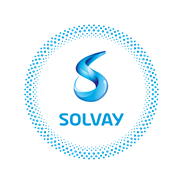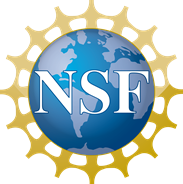
November 26 - December 1, 2023
Boston, Massachusetts
Symposium Supporters
2023 MRS Fall Meeting & Exhibit
Symposium EL09-2Ds Go Hybrid—Properties and Applications of Dimensionally Hybrid Systems
2D materials have the potential to revolutionize current technologies through on-chip integration of ultra-thin semiconductors with layer-dependent band structure and strain-tunable functional properties. The scientific community has explored the fabrication of planar 2D stackings for applications in photonics, optoelectronics, straintronics, valleytronics and twistronics, unlocking wide knowledge of the integration of 2D materials on different substrates and paving the way for more elaborate heterostructures. Which novel avenues can be unveiled in semiconductor stackings having different dimensionalities?
This symposium will gather the semiconductor and the 2D material communities to discuss the challenges and opportunities of non-planar heterostructures based on 2D materials. There will be a particular focus on dimensionally hybrid semiconductor heterostructures (2D/1D and 2D/0D systems), as well as heterostructures based on different 2D materials and on how recent research progress can improve existing and novel technologies in different application areas. The topic will be addressed with an interdisciplinary approach to maximize its impact and the generation of new ideas will be ensured by including researchers from related, but distinct subareas. The following topics are of particular interest: (i) Impact of morphology and chemistry of the individual components on the properties of the hybrid structure; (ii) Dimensionally mixed interfaces: surface confinement in 2D/1D and 0D stacking; (iii) High space- and/or time- resolution characterization techniques applied to hybrid structures; (iv) Experimental observation of 1D and 0D component-induced variation in parameters such as strain and the effects on optical and electronic response; (v) Charge and energy transfer in hybrid heterostructures; (vi) Insights into the integration process of multidimensional systems; (vii) Dimensionally hybrid systems that combine semiconducting with other properties such as magnetism. Contributions are also sought that advance understanding and control of quantum properties in 2Ds, envisioned to be coupled with other semiconductors for emerging areas where 2D materials show promising properties applicable in functional technologies.
This symposium will gather the semiconductor and the 2D material communities to discuss the challenges and opportunities of non-planar heterostructures based on 2D materials. There will be a particular focus on dimensionally hybrid semiconductor heterostructures (2D/1D and 2D/0D systems), as well as heterostructures based on different 2D materials and on how recent research progress can improve existing and novel technologies in different application areas. The topic will be addressed with an interdisciplinary approach to maximize its impact and the generation of new ideas will be ensured by including researchers from related, but distinct subareas. The following topics are of particular interest: (i) Impact of morphology and chemistry of the individual components on the properties of the hybrid structure; (ii) Dimensionally mixed interfaces: surface confinement in 2D/1D and 0D stacking; (iii) High space- and/or time- resolution characterization techniques applied to hybrid structures; (iv) Experimental observation of 1D and 0D component-induced variation in parameters such as strain and the effects on optical and electronic response; (v) Charge and energy transfer in hybrid heterostructures; (vi) Insights into the integration process of multidimensional systems; (vii) Dimensionally hybrid systems that combine semiconducting with other properties such as magnetism. Contributions are also sought that advance understanding and control of quantum properties in 2Ds, envisioned to be coupled with other semiconductors for emerging areas where 2D materials show promising properties applicable in functional technologies.
Topics will include:
- Relevant synthesis aspects for hybrid heterostructuring and high-throughput integration processes
- Chemical, structural, and property characterization at multiple length scales, with high spatial and temporal resolution
- Interplay between dimensional mismatching, defects and strain distribution in the 2D component and impact on the overall functional behavior
- Environmental perturbations: effect of the environment on the functional properties in vacuum, controlled atmosphere and standard conditions.
- Quantum properties in dimensionally hybrid heterostructures
- Fundamental and technological limits in fabrication scalability
- Hybrid systems beyond semiconductors (e.g., superconductor, magnetic ordering, 2D magnets) and their integration with other low dimensional materials
- Towards electronic, optoelectronic, photonic, energy conversion and sensing applications
Invited Speakers:
- Igor Aharonovic (University of Technology Sydney, Australia)
- Michal Baranowski (Wroclaw University of Science and Technology, Poland)
- Jessica Boland (University of Manchester, United Kingdom)
- Kirill Bolotin (Freie Universität Berlin, Germany)
- Jennifer Dionne (Stanford University, USA)
- Andrea C. Ferrari (University of Cambridge, United Kingdom)
- Anna Fontcuberta i Morral (Ecole Polytechnique Fédérale de Lausanne, Switzerland)
- Young Joon Hong (Pohang University of Science and Technology, Republic of Korea)
- Shengxi Huang (The Pennsylvania State University, USA)
- Ernesto Joselevich (Weizmann Institute of Science, Israel)
- Hannah Joyce (University of Cambridge, United Kingdom)
- Jeehwan Kim (Massachusetts Institute of Technology, USA)
- Dehui Li (Huazhong University of Science and Technology, China)
- Xiuling Li (University of Illinois at Urbana-Champaign, USA)
- Yuerui Li (The Australian National University, Australia)
- Vinod Menon (City University of New York, USA)
- Prineha Narang (University of California, Los Angeles, USA)
- Antonio Polimeni (Sapienza Università di Roma, Italy)
- Eric Pop (Stanford University, USA)
- Sumeet Walia (Royal Melbourne Institute of Technology, Australia)
- Ilaria Zardo (Universität Basel, Switzerland)
Symposium Organizers
Valerio Piazza
École Polytechnique Fédérale de Lausanne
Laboratory of Semiconductor Materials
Switzerland
Frances M. Ross
Massachusetts Institute of Technology
Department of Materials Science and Engineering
USA
Alessandro Surrente
Wroclaw University of Science and Technology
Department of Experimental Physics
Poland
Hoe Tan
The Australian National University
Department of Electronic Materials Engineering
Australia
Topics
absorption
dielectric properties
electronic structure
epitaxy
luminescence
optical properties
strain relationship




-2.tmb-mtg_rel_ad.png?Culture=en&sfvrsn=a4240c09_1)

























